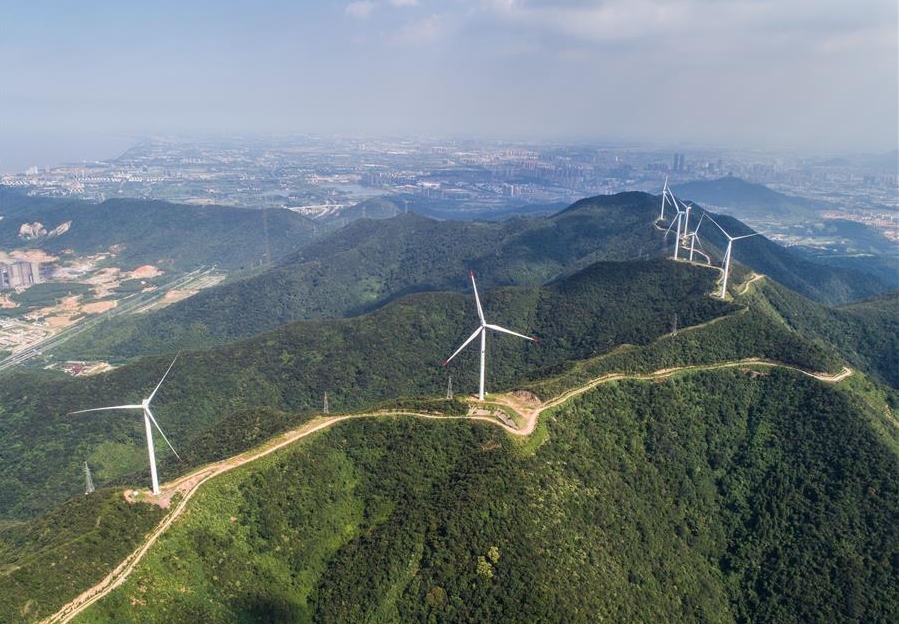Global CO2 emissions and China's challenges

The soaring CO2 emissions have led to frequent occurrences of climate anomalies and extreme climate disasters all over the world, and global climate change has become a common challenge for mankind. No one can insulate itself from climate crises.

Editor's note: The soaring carbon dioxide (CO2) emissions have led to frequent occurrences of climate anomalies and extreme climate disasters all over the world, and global climate change has become a common challenge for mankind. No one can insulate itself from climate crises. In this context, most of the heads of 40 countries and regions set clear targets to reduce CO2 emissions by 2030 at the Leaders Summit on Climate on April 22, 2021.
Following the commitment to striving to peak CO2 emissions by 2030 and achieve carbon neutrality by 2060 at the United Nations General Assembly on Sept. 22, 2020, China said at this summit that the targets of carbon peak and carbon neutrality have been added to its overall plan for ecological conservation.
How are global carbon emissions like today? What are the factors that affect carbon emissions? What challenges are countries in the world facing? You will find in this article by Professor Zhou Muzhi all the answers in detail based on the data analysis of the top 30 CO2 emitting countries and regions in the world.
The 21st century has seen the most rapid growth of carbon dioxide (CO2) emissions in human history. If we put global CO2 emissions in the timeline, three time periods would stand out: first, the world's total volume of CO2 emissions up until 1979 accounted for only 54% of cumulative emissions; second, the CO2 emissions during 1980-1999 accounted for 15.3% of cumulative emissions; third, the CO2 emissions during 2000-2019 accounted for up to 30.7%. In other words, global CO2 emissions nearly doubled since 1980. Even more notably, CO2 emissions during 2000-2019 doubled that during 1980-1999, and global CO2 emissions have skyrocketed since the 21st century.
1. Global CO2 emissions
Today, 79 countries and regions able to accurately track their CO2 emissions are responsible for 96.7% of global emissions.
During 2000-2019, 28 countries (the US, the U.K., Germany, Ukraine, Japan, Italy, France, Greece, Venezuela, Spain, the Czech Republic, the Netherlands, Denmark, Uzbekistan, Romania, Finland, Belgium, Sweden, Portugal, Hungary, Slovakia, Ireland, Switzerland, Bulgaria, Slovenia, Croatia, North Macedonia, and Norway) out of the 79 saw declines in their CO2 emissions. Those countries are generally composed of two types: developed countries (almost all the developed countries in the West included) and those with a sluggish economy.
On the contrary, the CO2 emissions of the remaining 51 countries and regions, mostly developing ones, increased incrementally, with those of newly industrialized countries led by China, rising significantly. In particular, the increase contributed by them was much greater than the reduction contributed by the aforementioned 28 countries. In fact, the reduction offset only 15.7% of the increase. It was the 51 countries and regions that drove up the rapid growth of global CO2 emissions during the period.
Today's global CO2 emissions have three main characteristics. First, the countries and regions who have reduced emissions co-exist with those still on the path of continuous emission increase.
Second, top emitters contribute to the vast majority of global emissions. In 2019, the top five emitters, including China, the US, India, Russia, and Japan, were responsible for 58.3% of global emissions. In other words, nearly 60% of global emissions came from the leading five countries. We can see from a further look at the list that the top 10 countries and regions accounted for up to 67.7% of global emissions, and the top 30 countries and regions 87%. The US and Japan pledged to cut emissions by 50-52% (compared with 2005) and 46% (compared with 2013) by 2030, respectively. These two challenging goals are undoubtedly a powerful boost for the upgrading of their energy structure and industrial structure.
Third, China ranks first with a striking volume and a contribution of 28.8%. Its emissions in 2019 were already approximately equivalent to the combined emissions of the four countries running behind — the US, India, Russia, and Japan. That is precisely why China's commitment to striving for carbon neutrality by 2060 is both significant and challenging.

































